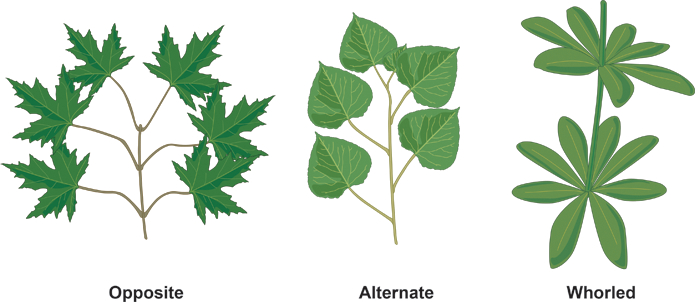Tree Survey: Point-Centered Quarter Sampling Method
Overview
A number of methods are available for sampling forest communities. Point-centered quarter is one such method. It is used to gather information on the density, frequency, and coverage of tree species found in a forest. This information provides the ability to estimate the number of individual trees encountered, how often a certain tree occurs, how common the tree is compared to other trees, and the size of the tree. Compared to the standard plot analysis, the point-centered quarter method is more efficient, which is a major advantage. In a fixed-area plot sampling, a small portion of the total area of the forest is examined. In this small subsample, the density is determined directly by counting and identifying each tree. The ratio between size of the subplot and the overall forest size is used to determine the density for the entire forest.
Procedure
1. Tree Survey
- Establish a 150 m transect in the forest.
- Place a stake every 50 m. Each stake (point) represents the center of four compass directions (N, E, W, S) that divide the sampling site into four quarters.
- In each quarter, the distance is measured from the stake to the nearest tree ≥ 40 cm, regardless of species. Only one large tree per quarter should be measured, so a total of 16 trees are recorded in the large tree category. Record the distance in cm for each.
Results
The point-centered quarter tree survey method produces three quantitative measures: the relative density, the relative frequency, and the relative basal area. These three values are added together to give the Importance Value of that species. This is then converted to a relative importance value (Table 5).
The importance value of a species can reach a maximum of 300 in a survey that only finds one species present. A high importance value does not necessarily mean that the spec
Application and Summary
Tree surveys are an important technique for both private and public stakeholders. They can provide helpful information to allow land managers to make informed decisions. A community may want to do a tree inventory to determine if there is a need for a forestry program. For example, the survey may reveal many dead or diseased trees (Figure 3) and indicate the need for more plantings. The survey may also help the community set up a maintenance schedule to prevent damage from hazardous trees. Lastly, the su
Tags
Skip to...
Videos from this collection:

Now Playing
Tree Survey: Point-Centered Quarter Sampling Method
Environmental Science
49.4K Views

Tree Identification: How To Use a Dichotomous Key
Environmental Science
81.3K Views

Using GIS to Investigate Urban Forestry
Environmental Science
12.7K Views

Proton Exchange Membrane Fuel Cells
Environmental Science
22.2K Views

Biofuels: Producing Ethanol from Cellulosic Material
Environmental Science
53.3K Views

Testing For Genetically Modified Foods
Environmental Science
89.9K Views

Turbidity and Total Solids in Surface Water
Environmental Science
35.9K Views

Dissolved Oxygen in Surface Water
Environmental Science
55.9K Views

Nutrients in Aquatic Ecosystems
Environmental Science
39.0K Views

Measuring Tropospheric Ozone
Environmental Science
26.5K Views

Determination Of NOx in Automobile Exhaust Using UV-VIS Spectroscopy
Environmental Science
30.2K Views

Lead Analysis of Soil Using Atomic Absorption Spectroscopy
Environmental Science
125.8K Views

Carbon and Nitrogen Analysis of Environmental Samples
Environmental Science
29.5K Views

Soil Nutrient Analysis: Nitrogen, Phosphorus, and Potassium
Environmental Science
216.1K Views

Analysis of Earthworm Populations in Soil
Environmental Science
16.5K Views
Copyright © 2025 MyJoVE Corporation. All rights reserved

